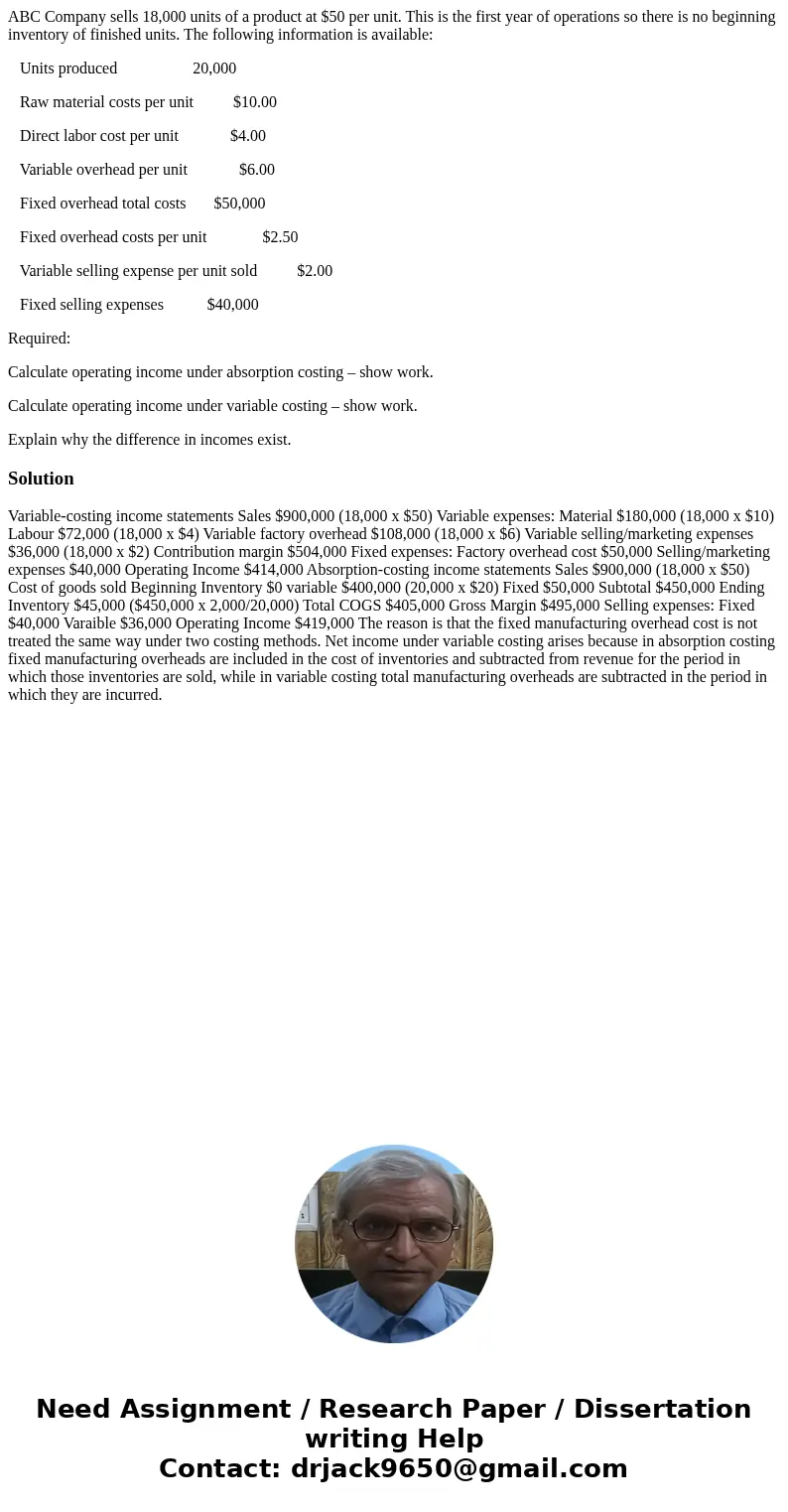ABC Company sells 18000 units of a product at 50 per unit Th
ABC Company sells 18,000 units of a product at $50 per unit. This is the first year of operations so there is no beginning inventory of finished units. The following information is available:
Units produced 20,000
Raw material costs per unit $10.00
Direct labor cost per unit $4.00
Variable overhead per unit $6.00
Fixed overhead total costs $50,000
Fixed overhead costs per unit $2.50
Variable selling expense per unit sold $2.00
Fixed selling expenses $40,000
Required:
Calculate operating income under absorption costing – show work.
Calculate operating income under variable costing – show work.
Explain why the difference in incomes exist.
Solution
Variable-costing income statements Sales $900,000 (18,000 x $50) Variable expenses: Material $180,000 (18,000 x $10) Labour $72,000 (18,000 x $4) Variable factory overhead $108,000 (18,000 x $6) Variable selling/marketing expenses $36,000 (18,000 x $2) Contribution margin $504,000 Fixed expenses: Factory overhead cost $50,000 Selling/marketing expenses $40,000 Operating Income $414,000 Absorption-costing income statements Sales $900,000 (18,000 x $50) Cost of goods sold Beginning Inventory $0 variable $400,000 (20,000 x $20) Fixed $50,000 Subtotal $450,000 Ending Inventory $45,000 ($450,000 x 2,000/20,000) Total COGS $405,000 Gross Margin $495,000 Selling expenses: Fixed $40,000 Varaible $36,000 Operating Income $419,000 The reason is that the fixed manufacturing overhead cost is not treated the same way under two costing methods. Net income under variable costing arises because in absorption costing fixed manufacturing overheads are included in the cost of inventories and subtracted from revenue for the period in which those inventories are sold, while in variable costing total manufacturing overheads are subtracted in the period in which they are incurred.
 Homework Sourse
Homework Sourse